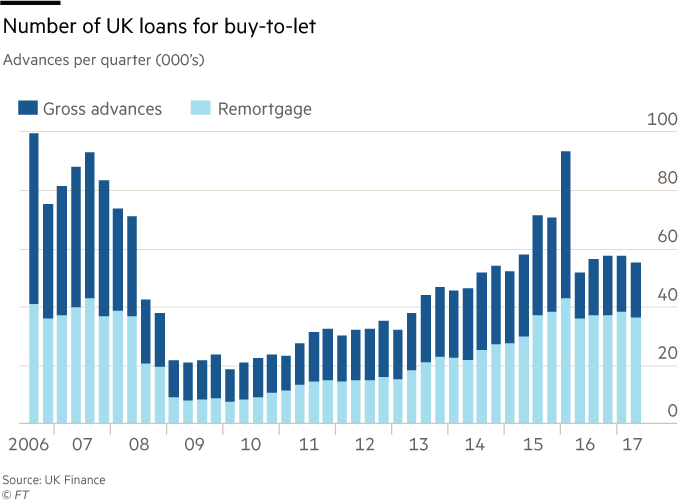Buy-to-let investors in London face a financial squeeze
09-23-2017

Landlords are looking beyond the M25 and to multiple occupancy for higher returns
© Getty
Many investors, however, are not throwing in the towel just yet — and some are finding new ways to continue bringing in returns for their bricks-and-mortar rental assets. Landlords facing the problem of falling returns in London are now looking further afield to make their own or borrowed money work harder. Cities with large student populations such as Southampton and Liverpool or those displaying strong sector growth, such as Manchester’s media industry, are attracting landlords struggling to make the numbers add up in the capital. However, those who are wedded to London are opting for renting to multiple tenants — the market segment known as houses in multiple occupation (HMOs).
Renting a house or flat to a group of individuals, rather than renting it to a family, can raise a yield by 2 to 3 percentage points, experts say. A typical return on investment for a property in London can be as low as 2 per cent or less, while an HMO can generate 7-9 per cent, says John Goodall, chief executive of buy-to-let specialist Landbay. “Despite being more complex to manage, they can be very profitable.
”Investors will often buy a family house and convert it into a property suitable for multiple occupiers using a bridging loan while the work is carried out. Once the property is let, they typically switch to a specialist HMO mortgage for longer-term borrowing. Karl Griggs, a director at buy-to-let mortgage broker CPC Finance, says: “We’re seeing more HMOs across the country. What’s going on in London has opened up people’s eyes elsewhere.
They’re using them to multiply their cash flow.” Landlords considering entering this part of the buy-to-let market should be aware of its challenges. Some lenders will not offer mortgages on HMO properties, while those that do can often charge higher rates of interest. There is often more work involved in letting, since instead of a single individual or family there are multiple tenants with separate agreements. Turnover is higher, since HMOs are often rented to students or young professionals, so landlords must work harder to minimise vacant periods.“You need to get involved,” says David Lawrenson, a buy-to-let owner and landlord adviser at LettingFocus.com. “There’s more work for the landlord or the managers.”Mr Goodall says: “Before jumping straight in it is essential that prospective HMO landlords do their research, carefully comparing the additional work and expense against the additional profit they’d be likely to make.”Britain’s buy-to-let landlords can still turn a profit, it seems, but their room for manoeuvre is narrowing.
Copyright
The Financial Times Limited 2017. All rights reserved. You may share using our article tools. Please don't copy articles from FT.com and redistribute by email or post to the web.


